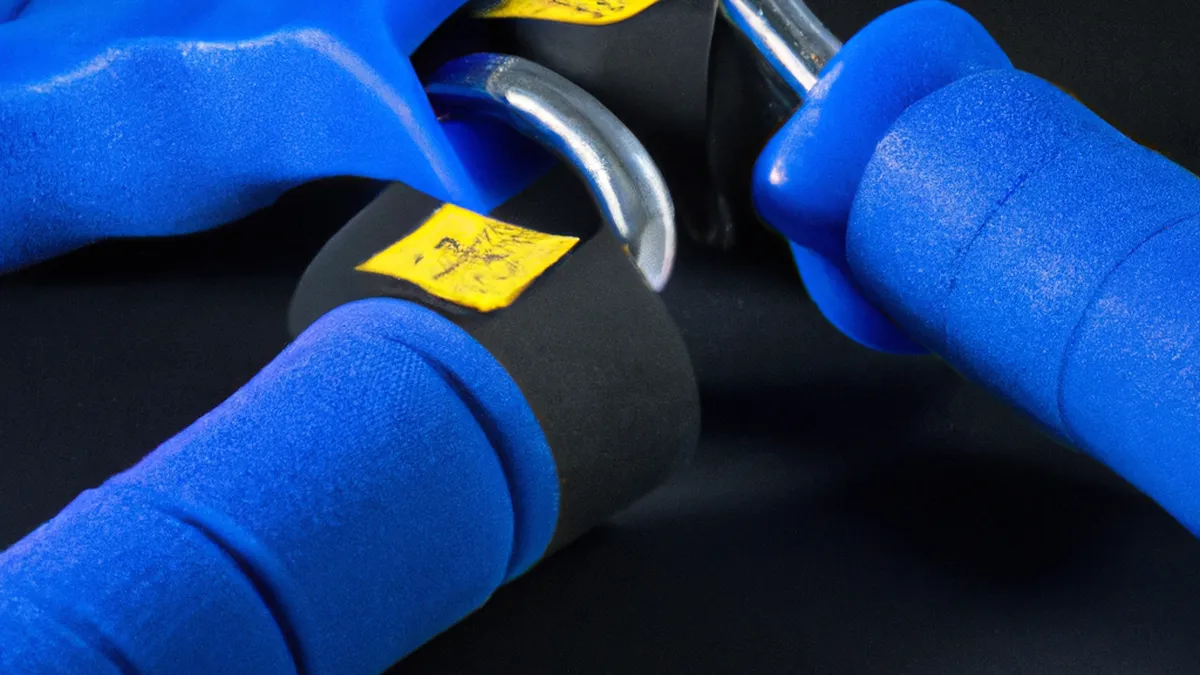Sculpt Stronger Hands: Grip Training Explained
How to Use a Grip Strength Trainer for Maximum Gains
Grip strength is vital for weightlifting, rock climbing, and daily tasks. A strong grip improves performance and reduces injury risk. A grip strength trainer helps develop this essential skill. This blog discusses effective use, techniques, tips, and benefits.
Understanding Grip Strength Trainers
Grip strength trainers include hand grippers, resistance bands, and specialized tools like Captains of Crush. Each type offers unique benefits tailored to your needs. Hand grippers are common and available in various resistance levels. Resistance bands enable dynamic exercises that target multiple muscle groups. Tools like Captains of Crush provide a structured grip training approach.
All grip strength trainers develop muscles in your hands, fingers, and forearms. These muscles enhance exercise performance and overall functional strength. Strengthening these groups improves sports performance, lifting capacity, and daily activities.
Tips for Effective Use
To maximize gains, consider these tips:
Start with the Right Resistance
Choose appropriate resistance for effective training. Beginners should start with lighter resistance to learn movements and prevent injuries. Gradually increase resistance as you build strength and confidence. This principle fosters muscle growth while minimizing injury risk.
Incorporate Different Exercises
Variety is key in grip training. Don’t limit yourself to one exercise. Incorporate various movements to target different muscle groups. Perform squeeze grips, finger extensions, wrist curls, and static holds. These variations promote balanced muscle development and keep training engaging. Mix in sport-specific exercises to enhance performance.
Focus on Form and Technique
Maintain proper form to maximize gains and reduce injury risk. Keep a firm grip without overexerting yourself. Focus on controlled movements, engaging the correct muscles. Poor form can strain your hands and wrists, leading to injury. Prioritize quality over quantity; fewer reps with perfect form are better than rushing through many reps poorly.
Incorporate Dynamic Movements
Static exercises build strength, but dynamic movements enhance grip training. Use resistance bands for exercises that mimic pulling and pushing motions.
Conclusion
In summary, using a grip strength trainer effectively requires attention to resistance, exercise variety, form, and dynamic movements.
Below are related products based on this post:
FAQ
What types of grip strength trainers are available?
Grip strength trainers include hand grippers, resistance bands, and specialized tools like Captains of Crush. Each type offers different benefits, with hand grippers being common for beginners and resistance bands allowing for dynamic exercises that engage multiple muscle groups.
How do I know what resistance level to start with?
Beginners should start with lighter resistance to learn proper movements and reduce the risk of injury. As you build strength and confidence, gradually increase the resistance to promote muscle growth effectively.
Why is it important to focus on form and technique during grip training?
Maintaining proper form is crucial to maximize gains and minimize injury risk. Controlled movements that engage the correct muscles are essential, as poor form can lead to strain and injuries. Prioritizing quality over quantity in your repetitions will yield better results.















Post Comment